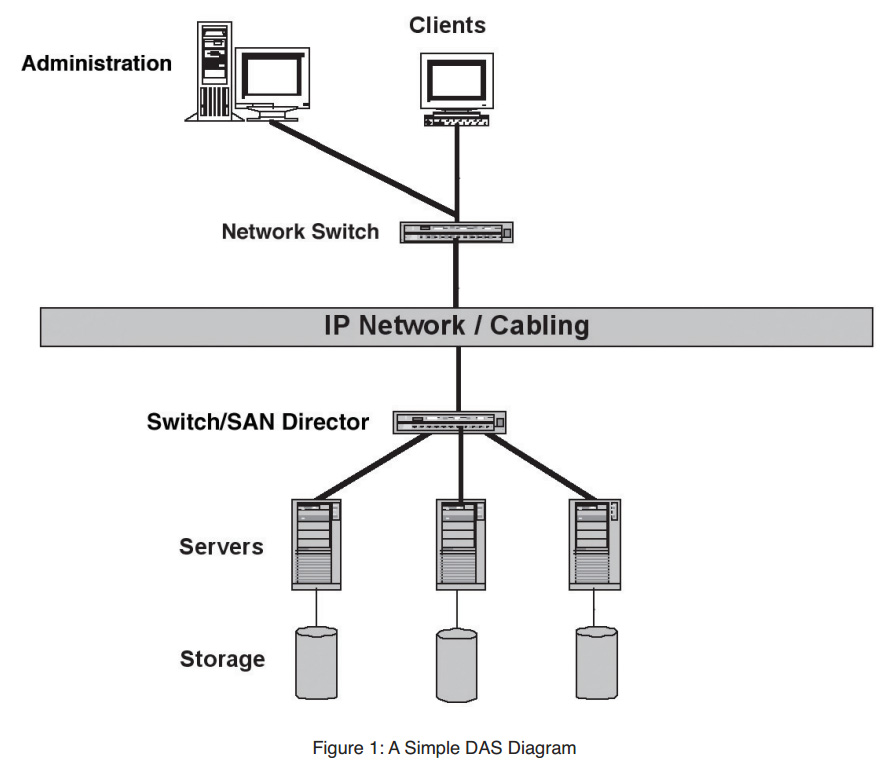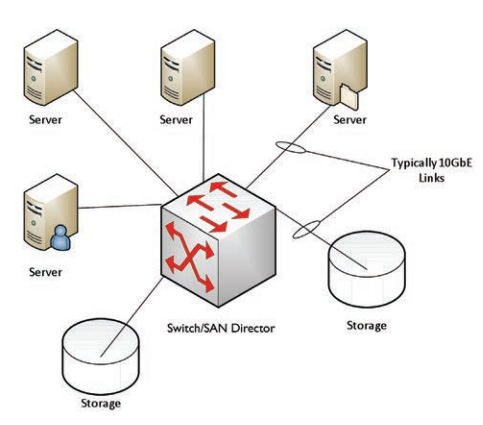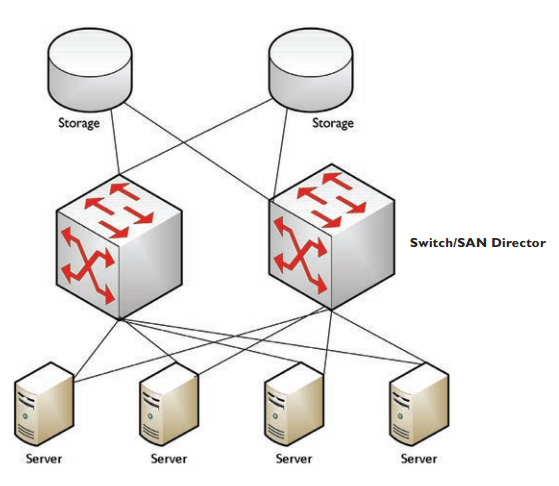Storage network technology has developed in the following three main configurations: Direct Attached Storage (DAS), Network Attached Storage (NAS), and Storage Area Networks (SAN).
Direct Attached Storage (DAS)
DAS is the traditional method of locally attaching storage devices to servers via a direct communication path between the server and storage devices. As shown in Figure 1, the connectivity between the server and the storage devices are on a dedicated path separate from the network cabling. Access is provided via an intelligent controller. The storage can only be accessed through the directly attached server. This method was developed primarily to address shortcomings in drive-bays on the host computer systems. When a server needed more drive space, a storage unit was attached. This method also allowed for one server to mirror another. The mirroring functionality may also be accomplished via directly attached server to server interfaces.
Network Attached Storage (NAS)
NAS is a file-level access storage architecture with storage elements attached directly to a LAN. It provides file access to heterogeneous computer systems. Unlike other storage systems the storage is accessed directly via the network as shown in Figure 2. An additional layer is added to address the shared storage files. This system typically uses NFS (Network File System) or CIFS (Common Internet File System) both of which are IP applications. A separate computer usually acts as the “filer” which is basically a traffic and security access controller for the storage which may be incorporated into the unit itself. The advantage to this method is that several servers can share storage on a separate unit. Unlike DAS, each server does not need its own dedicated storage which enables more efficient utilization of available storage capacity. The servers can be different platforms as long as they all use the IP protocol.
Storage Area Networks (SANs)
Like DAS, a SAN is connected behind the servers. SANs provide block-level access to shared data storage. Block level access refers to the specific blocks of data on a storage device as opposed to file level access. One file will contain several blocks. SANs provide high availability and robust business continuity for critical data environments. SANs are typically switched fabric architectures using Fibre Channel (FC) for connectivity. As shown in Figure 3 the term switched fabric refers to each storage unit being connected to each server via multiple SAN switches also called SAN directors which provide redundancy within the paths to the storage units. This provides additional paths for communications and eliminates one central switch as a single point of failure.